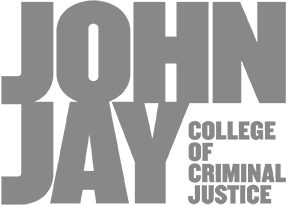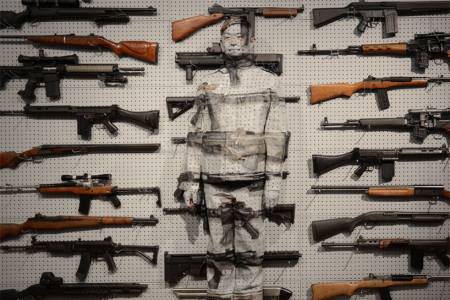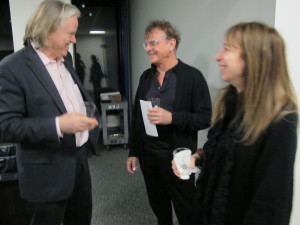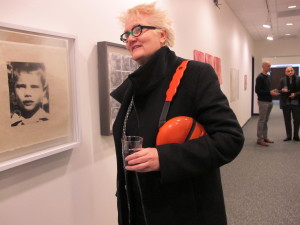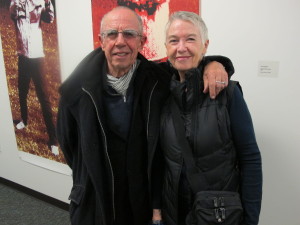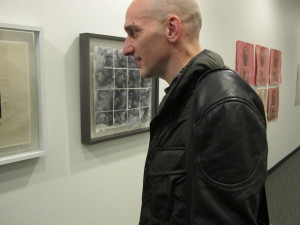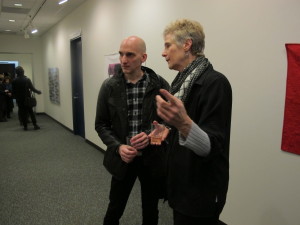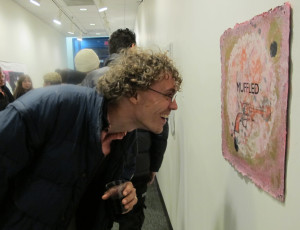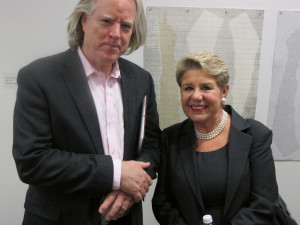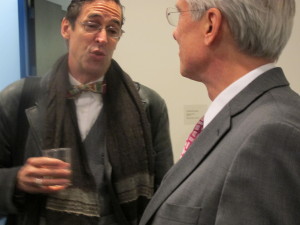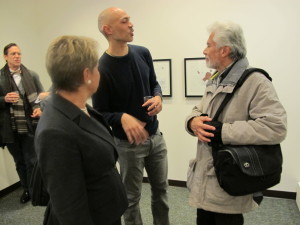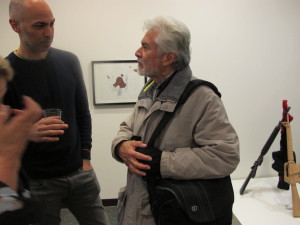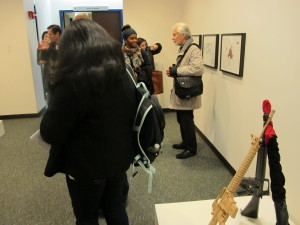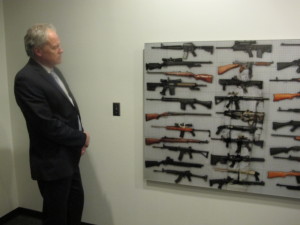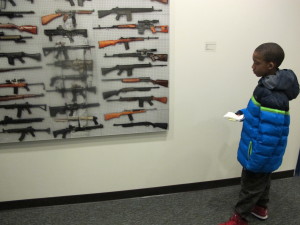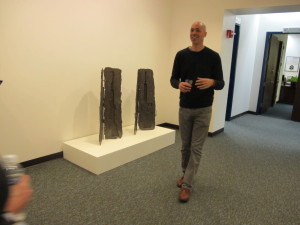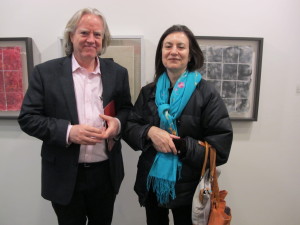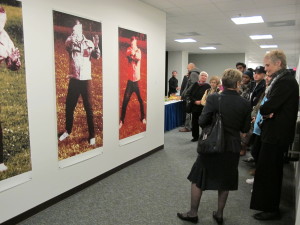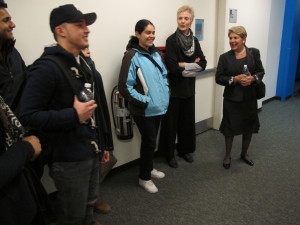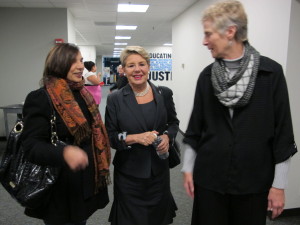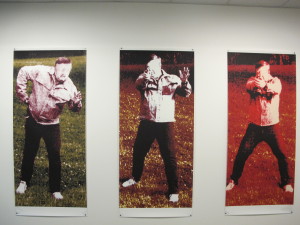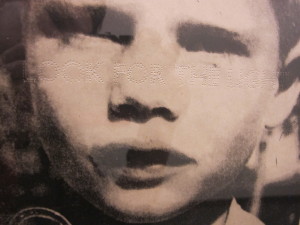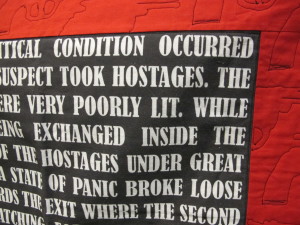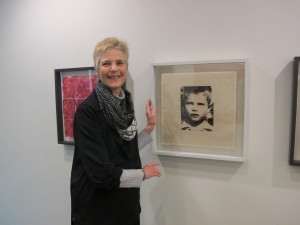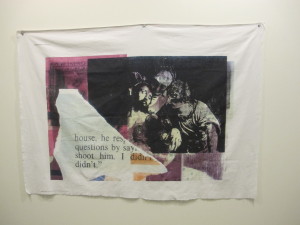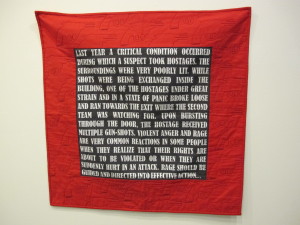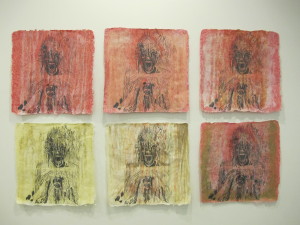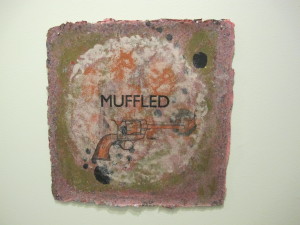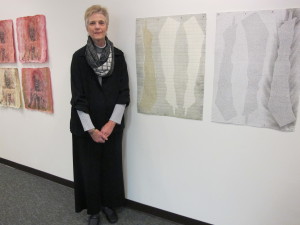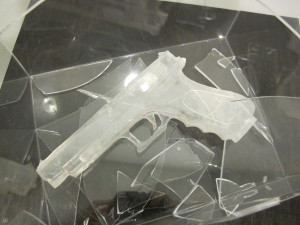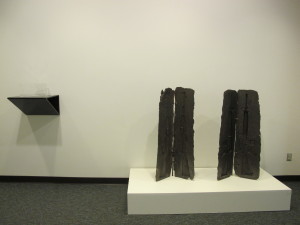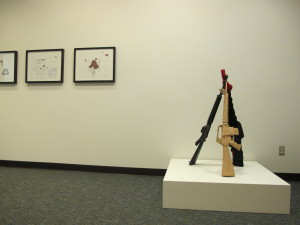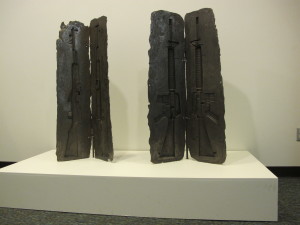On view from November 4, 2013, through January 17, 2014
President’s Gallery
From 1960 when the crime rate was 3,384,200 for a population of 179,323,175 it has risen to 10,914,040 in a population of 13,914,902. From our public High Schools and Universities to the Movie Theater killings at Aurora, Colorado, where 12 innocent people were killed, and to the 32 Virginia Tech shootings we have witnessed an abundance of violent deaths in our country. It a particularly senseless act when perpetuated upon children as it was at Sandy Hook Elementary School on December 14, 2012.These numbers did vacillate as murder with guns dropped 39 percent to 11,101 in 2011 from a high of 18,253 in 1993.
However they are expected to rise to 33,000 by 2015 and according to the September 17th, 2013 issue of the Huffington Post, gun killings will end up being the cause of a larger number of deaths than car accidents. Violence has become so commonplace that universities and other schools have added entrance guards, and metal detectors and other public safety measures. John Jay’s President Jeremy Travis recently sent a memo to the entire community on the prevention of violence on campus and the appropriate action to take should an incident become imminent.
So what are some of the causes of this acceleration in violence among us? Delegate House Speaker Michael Busch recently stated that “The vast majority of violence takes place with handguns. The significant mass shootings take place with semi-automatic weapons….” Most recently because of the Navy Yard shootings of 57 people, tougher gun control laws were proposed but were vetoed and opposed by such politicians as Hartford County’s Senator Nancy Jacobs who called for killing the new gun control laws before they were passed. However, in Maryland, more stringent control methods are being put in place starting October 1st such as fingerprinting that can be used for background checks on people with handguns. In addition, legislature has decided that there should be no more sales of semi-automatic weapons. It is generally agreed that better gun control and enforcement as well as stronger gun laws are necessary to reduce gun violence.
How do artists react to these senseless killings? They respond by painting, sculpting, constructing, and silk-screening their creative polemic. Like Gandhi who fought through passive resistance, they re-direct anger and rage into peaceful means. Their anger is focused channeled through creativity and production rather than destruction and violence. Despina Meimaroglou in her series Thy Neighbor, depicts a gunman in the midst of taking aim. Her 5 vertical silkscreen works, gradually change color going from neutral to red tones. According to the artist she utilized color as a gauge of mood in someone so violent to show that as he gets angrier his mood changes from neutral to red. Her accompanying piece on cloth with text extrapolates from the news to comment upon a recent hostage situation where innocent people were killed during a hold up when a S.W.A.T. team broke through. Meimaroglou righly claims that “rage should be guided and directed into effective action.” Helen Frederick’s Father and Daughter depicts the shock of sudden pain and loss as a father tries unsuccessfully to shield his daughter from apparent trauma. There is conflation between the figures and the background. As we encounter the bullet holes on target practice paper the blood red hits appear to seep into the white paper coloring it pink in some and red in other areas. Father and Daughter, mouths wide open in the existential scream, are covered by what appear to be tears, flames, blood and mucus forming a groove pattern that seems to almost blend them into the busy linear background network. Frederick’s Loss, 2012 is a three part lithograph with pierced wording stating “LOOK FOR THE LIGHT” across the boy’s face. The artist juxtaposes the boy’s sweet innocence of the middle panel against the right panel depicting disembodied arms whose index fingers point either up or down. On the other side of the boy’s image, the left panel is comprised of a piece divided into a sixteen piece grid reminiscent in texture of a sidewalk surface, a rough stone, or a grave. Frederick memorializes a great tragedy that is meant to stand as universal, timeless example against the horrors of man’s inhumanity to man. Roberto Visani makes a slightly different statement with his gun pieces although this one too is loaded with violent content and have multivalent readings. Visani references Kingston in one of his drawings called Kingston Dummy, which because it contains the words Kingston dummy could be referencing the Kwikset Kinston Dummy Knob company that manufactures door knobs, handles and other metal accessories. This type of word play is reminiscent of Duchamp’s punning as seen in such works as In Advance of a Broken Arm, or in The Fountain that were also taken out of context, and given titles. Or, Visani could be making a more literal statement about the violence in Kingston, Jamaica where such a great number of attacks caused the state department to warn all Americans to stay away from this area. The latter is more likely since the designs are accompanied by bloodlike patches that stain the paper surface. Ghost Guns is another of Visani’s pieces that depicts several transparent boxlike containers containing guns. The boxes contain guns, and going by the blood stains on the paper, it appears that they’ve been boxed after they finished with their bloody work. This is the opposite of Untitled Plexigun whose plexi container appears to have been broken to give access to the bloody weapon inside. Simultaneously, Visani through his use of plexi material negates the violent nature of a gun transforming it into something decorative thereby useless. The artist’s Verso M16 speaks volumes regarding the manufacture of automatic weapons. Although the weapon is missing, its form has been imprinted into the mold that can also be read as fine arts sculpture. This gun/artwork conflation is interesting if taken along with the artist’s statement that is a poem and that seems to be saying it is our choice to behave properly—a gun is an object that by itself can do nothing, it needs someone to fire it to be violent. Liu Bolin’s Hiding in New York No. 9- Gun Rack, 2013 ostensibly appears like a gun rack with a selection of different automatic rifles some with scopes, on them. Upon closer inspection however, his self-portrait appears on the white peg board underneath the guns. The statement he’s obviously making is about self-effacement and as the artist explains, his works “originate from his life experiences and the obstacles” that he encountered. His Hiding in the City series, has become strategy wherein like a chameleon, he can blend into his surroundings for protection. Bolin’s survival method is camouflage wherein he paints himself into the background taking on its color and texture. But, Bolin is not just simply showing off his drawing abilities, he is also punning the condition of man living in the big city where commodification and consumer culture absorbs his very identity.
Curated by: Thalia Vrachopoulos
